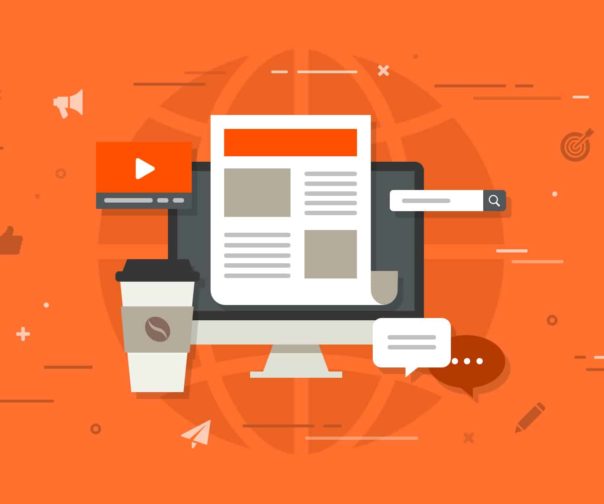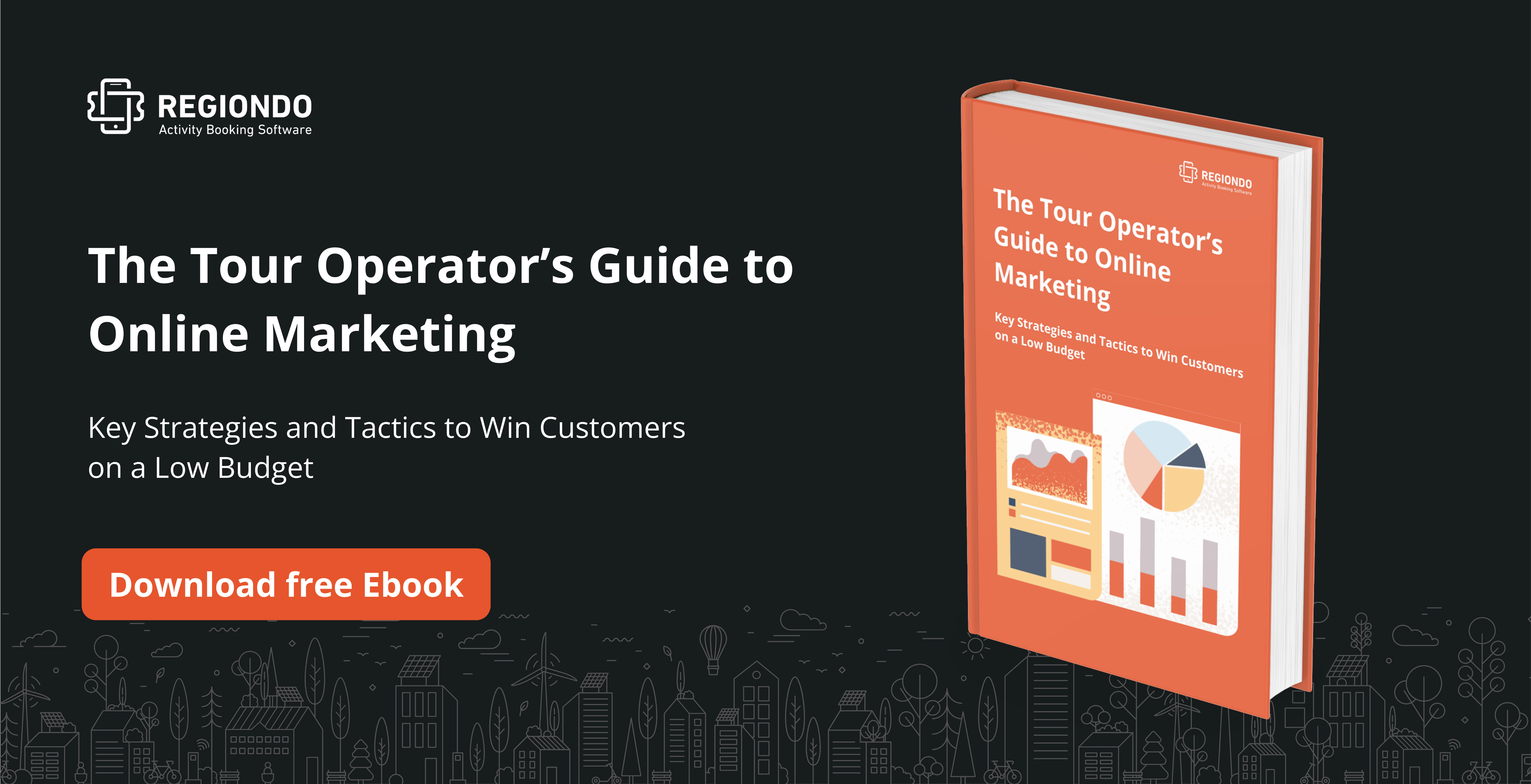After a very difficult 12 months for the industry, you’re probably now working hard to secure bookings for the second half of 2021. So, how can you stand out from a saturated market and win customers? You need to have excellent copy on both your offline and online channels. Let’s dig deeper to see how you can achieve this.
Why is copywriting important for tours and activities
55% of all page views only get a few seconds of attention before the reader moves away.
This means that good copywriting can help you boost your revenue by keeping them around for longer! Its core purpose is to make people act, whether that be subscribing to a newsletter or making a purchase or booking.
Publishing good copy on your website helps you to build trust. Your website or tour/activity brochure might be the first contact that a potential customer has with your company. By offering content that educates, informs, and gives a clear idea of what your brand represents, you will already build trust and authority. This will definitely lead to an increase in your conversion rates.
When we talk about copywriting, we can’t forget SEO. Copy plays an integral role in boosting your search engine ranking. By using the correct keywords and consistently producing fresh and relevant information, you will move further up the rankings and be considered as a trusted source of information by all major search engines.
8 Copywriting tips for tours and activities
1. Research
Sounds obvious, right? But you would be surprised at just how many companies write whatever they think is relevant, without doing any research to back it up. By doing thorough research, you will be able to zoom in on your customer and write exactly what they want to read.
So, how can you feel the pulse of your audience and stay in touch with what’s interesting and relevant for them?
You can start by following trending hashtags among your target audience, keeping up to date with industry trends, and speaking to your customers directly.
Dig through emails or social media messages to see what questions are being asked…this means that your potential customers haven’t found this information online.
2. Spend lots of time on headlines
A good headline is crucial when it comes to catching attention as it determines whether or not people continue reading. With a few words, you need to paint a picture, evoke an emotion, capture a need.
And the good news is we work in a fun industry that people like to read about. It’s much easier for tour and activity operators to write an attractive and enticing headline than, say, a company that makes screws!
When coming up with a headline, be it for a blog post, email subject line, or social media post, the first step is to think of your customer and why they need to know this information.
You are personally appealing for them to continue reading, so write something that you know they want to see. Don’t be afraid to test out different headlines to see which ones work best for you.
3. Speak your customers’ language
Capturing the right tone in your copywriting is key to converting leads into business. Your tone of voice needs to echo that of your customers and must create an emotional response.
This should be easy if you have your buyer personas finalized already. You know who they are, where they live, what they like, what media they read. All of this information is key when it comes to choosing your tone of voice for copy.
Your tone should engage your visitors and stimulate positive feelings…not only will this boost initial conversion but also increase customer retention. What more could you possibly want?
4. Allow for free-writing
Let’s say that you know your tone of voice and you know which topic you need to address. Before you do any article-specific research, spend some time free-writing. Put an alarm on for 10 minutes and write freely on what comes into your mind on the topic. Authors use this technique when they are struggling with writer’s block and it is just as useful for copywriters.
How should you go about it? Don’t stop writing and do it the way that you think. You can write down bullet points or random ideas, anything that jumps out at you with regards to the topic. When the 10 minutes is up, you may find some very valid points to include in your copy!
5. Use copywriting formulas
There are a number of different formulas out there to help copywriters structure their writing. We have listed the 2 most popular ones for you to test and see which appeals more to you.
AIDA
This stands for Attention, Interest, Desire, and Action and is widely used in every industry. You start with catching the attention of your reader, then keeping them interested by storytelling or explaining the problem they are facing. The next step is to show exactly how your tour or activity will make them happy. Finally, you put the call to action to push for them to book.
PAPA
This formula covers problem, advantage, proof, and action. First of all, present the problem (stuck at home for the last 12 months, strong need for a change of scenery) followed by the advantage of your product/service. You then move on to the proof that you can solve the initial problem (here you can use testimonials or other user-generated content) and then add in the call to action.
6. Read aloud
This is often forgotten but it is a great copywriting tip. If you read aloud your text, you will catch all sorts of issues that you don’t see when reading. Maybe your sentences are too long, or the rhythm of the text is off. Reading aloud is the only way to see if this is the case. It’ll also help you catch repetitive wording and awkward grammar.
7. Consider your subheadings
When it comes to copywriting, it is crucial to think about the different types of subheadings. By this, I mean H1, H2, H3, and so on. Subheadings help to make your content easily scannable and digestible. No-one wants to be faced with a huge block of text, it’s enough to make anyone leave the page! Subheadings allow for the reader to know exactly what to expect in the copy, and go straight to the parts that they find most relevant.
And search engines know this. They want the copy to be easily scannable and put a lot of importance on the headings that are classed as H1 – the main headline which should usually include your target keywords.
The H2 wordings are also important when it comes to SEO. WordPress and other popular site builders have built-in plug-ins to help you with how to use headings to boost your search engine rankings.
8. Tools are your friend!
There are a bunch of different free and paid tools out there that can help you with your copywriting.
Hemingway
This is a free tool that checks readability and grammar while pointing out phrases that could be simplified and your word count.
Google Keyword Planner
If you are at a loss of which topic to write for your copy, the Google Keyword Planner can help you to discover, research, and see bid estimates on keywords.
Examples of great copywriting for tours and activities
Intrepid Travel is famous for its excellent copy. They really paint a picture of what to expect when you book with them and create a sense of desire. They know who their buyer is and how to directly appeal to them. Check out their text for cycling tours in Europe below:

Another company that nails down copywriting is Go Ape. They are an outdoor activity provider with activities all over the UK. Their client base is families who want to spend time outdoors together competing in different adventures. Their blog is perfectly tailored to their target audience, with a variety of different topics to appeal to families and adventure seekers alike. Check it out here if you need some ideas to inspire your own content!
Conclusion
We hope that you understand the importance of copywriting and see why a good copywriter is worth their weight in gold! If your potential client spends time reading your content and enjoys what they see, they are much more likely to convert into a paying customer.





